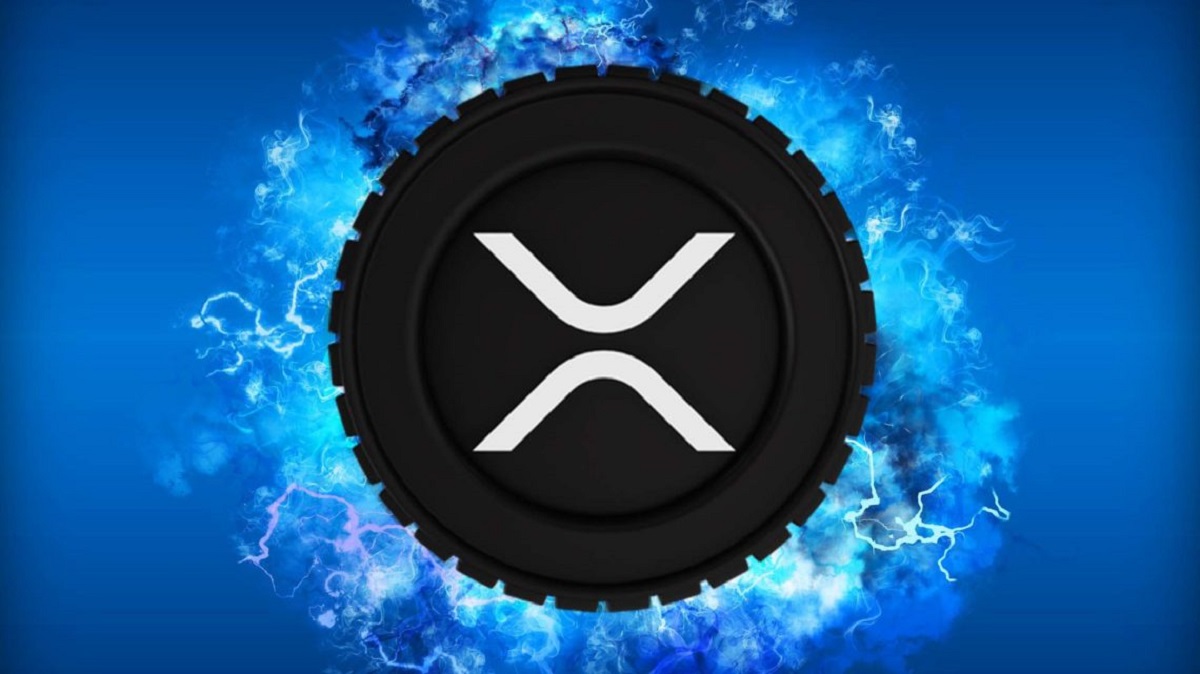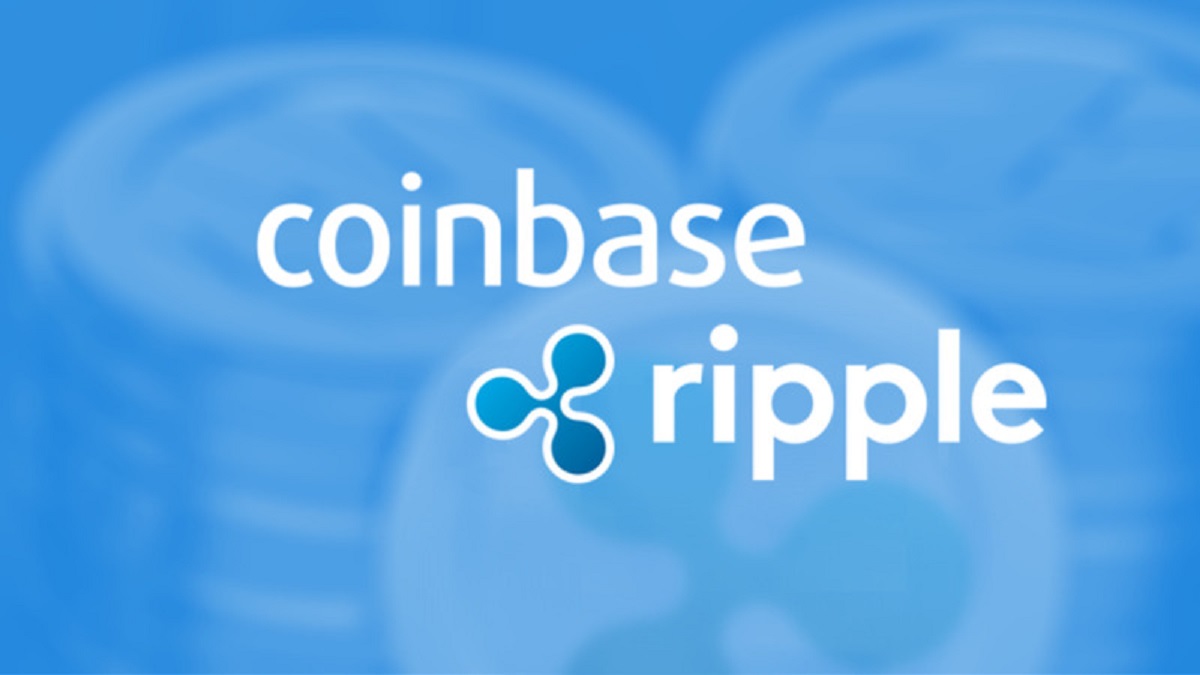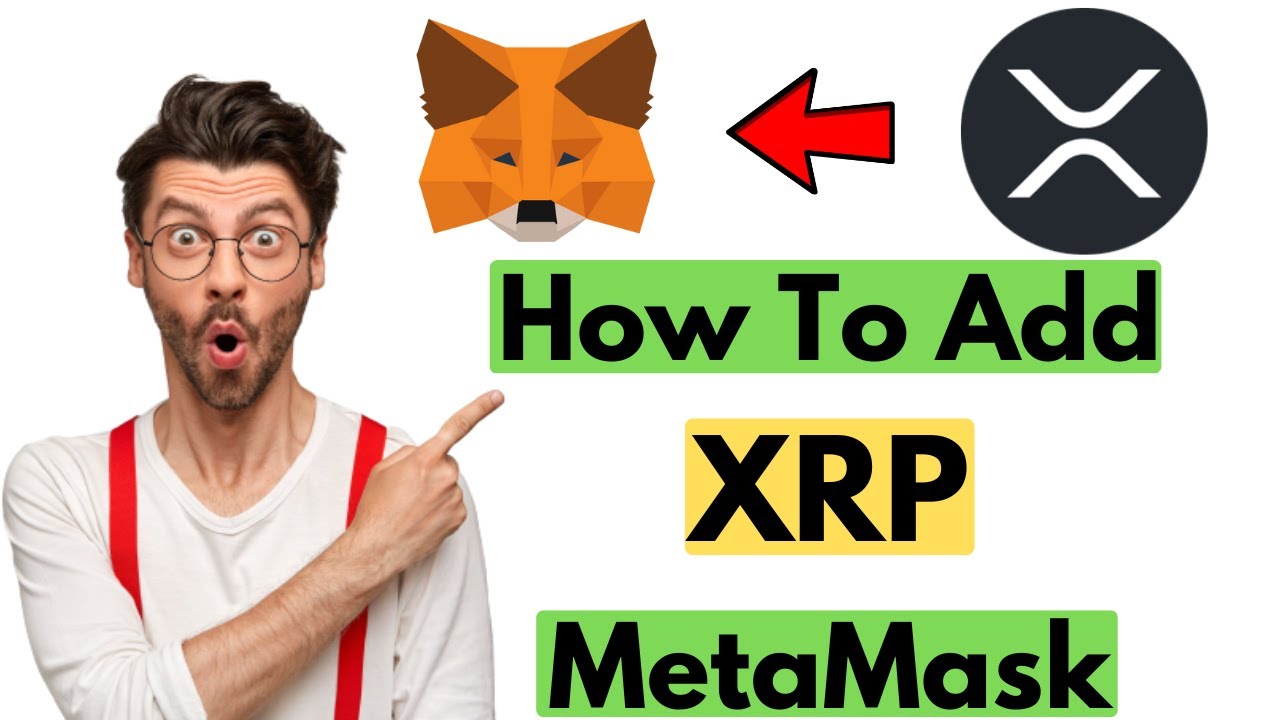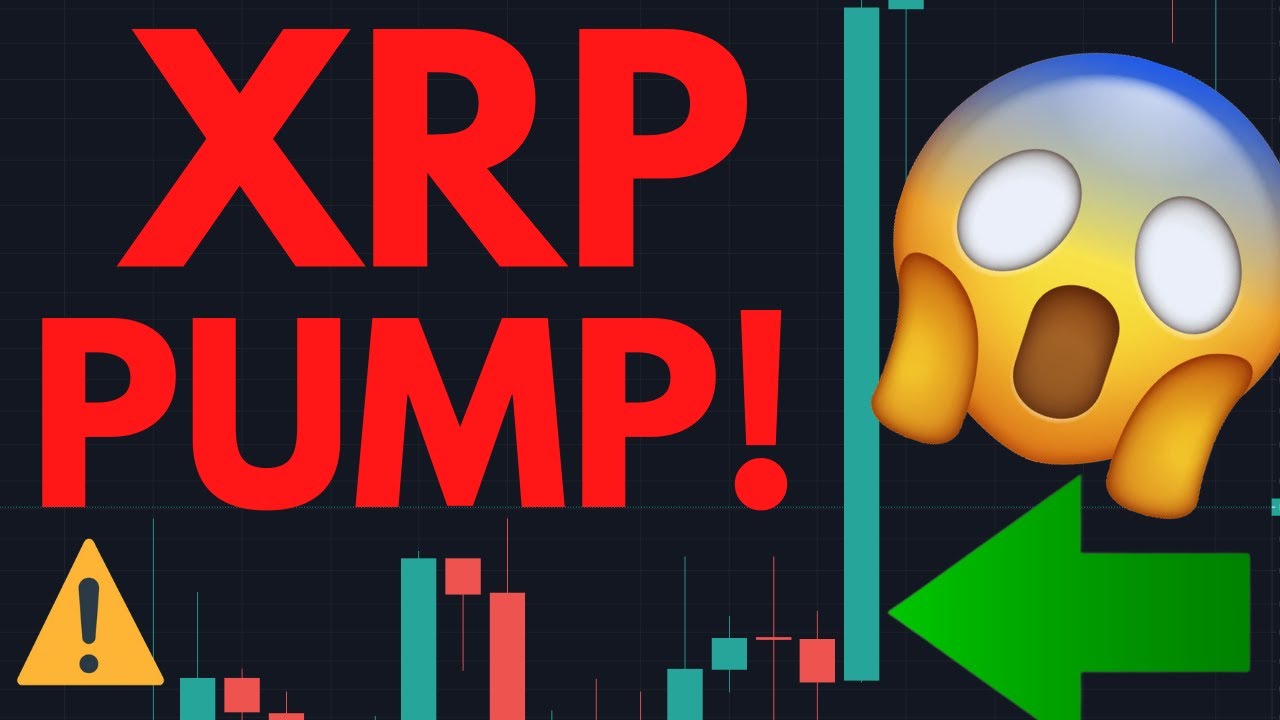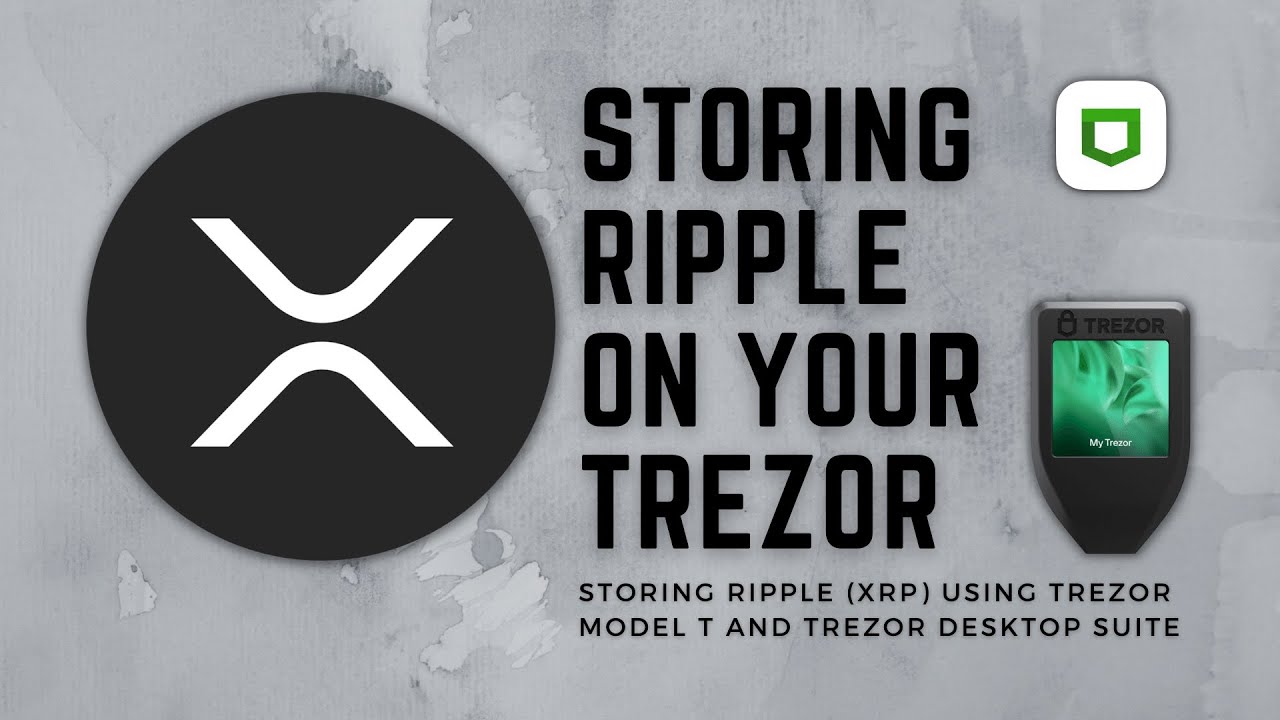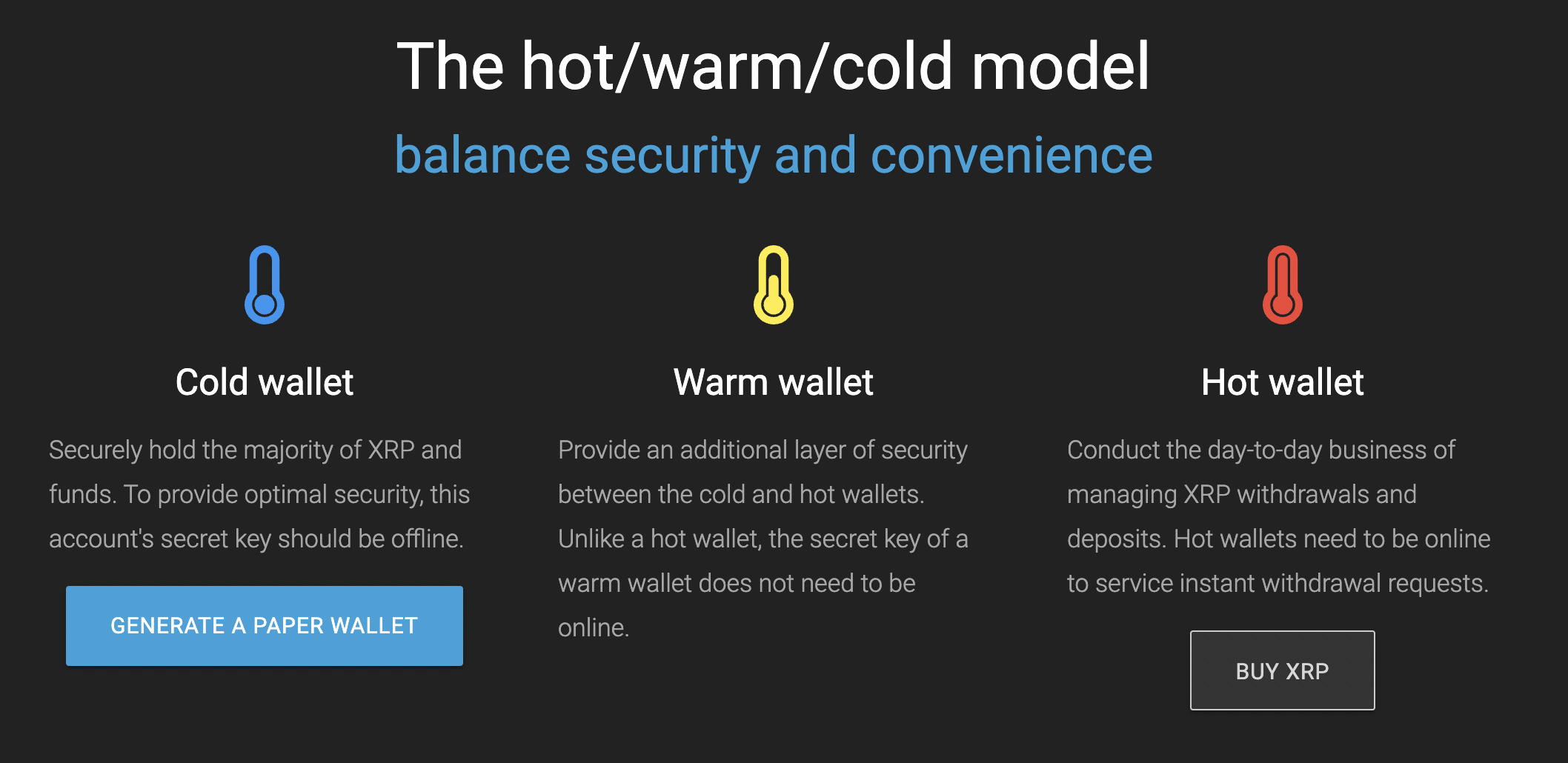Introduction
Welcome to this informative article on XRP, where we will explore the fascinating world of cryptocurrency and delve into the supply of XRP. XRP is a digital asset that has gained significant attention within the blockchain industry. As one of the largest cryptocurrencies in terms of market capitalization, understanding its supply dynamics is crucial for investors, enthusiasts, and anyone interested in the digital currency space.
XRP stands for Ripple, the company that developed the XRP Ledger. Unlike traditional cryptocurrencies like Bitcoin and Ethereum, XRP has a unique distribution model and a different purpose in the cryptocurrency ecosystem. While Bitcoin aims to be a decentralized digital currency and Ethereum focuses on smart contracts and decentralized applications, XRP primarily serves as a bridge currency for facilitating fast and low-cost international money transfers.
This article will provide an overview of XRP’s supply, including how many XRP were initially created, the number currently in circulation, and the mechanisms used to control its distribution. We will also examine the impact of XRP supply on its price and market value, exploring factors that influence its value in the crypto market.
So, whether you’re a curious beginner or a seasoned crypto investor looking to expand your knowledge, let’s dive into the world of XRP and uncover the mysteries behind its supply dynamics. But first, let’s understand the basics of what XRP is and its role within the cryptocurrency ecosystem.
What is XRP?
XRP is a digital asset that was created by Ripple Labs, a company founded in 2012, with the aim of revolutionizing cross-border payments and making them faster, more efficient, and cost-effective. It is built on the XRP Ledger, an open-source blockchain technology that enables fast and secure transactions.
Unlike traditional cryptocurrencies such as Bitcoin and Ethereum, XRP does not rely on mining for its creation. All 100 billion XRP coins were pre-mined and issued by Ripple Labs at its inception. This means that the entire supply of XRP already exists and is not subject to the process of mining new coins.
One key aspect that sets XRP apart is its transaction speed. While Bitcoin and some other cryptocurrencies can take several minutes or even hours to confirm transactions, XRP transactions can settle in just a few seconds. This makes it an attractive option for financial institutions and payment processors that require fast transaction times to move large volumes of money across borders.
Another important feature of XRP is its low transaction fees. Unlike some other cryptocurrencies that charge high fees for transferring funds, XRP transactions typically have very minimal fees, making it an appealing choice for those looking to send money internationally without incurring hefty charges.
In addition to its transactional use case, XRP can also be used as a bridge currency for liquidity between different fiat currencies. This means that if a financial institution wants to convert one currency to another, but there is no direct trading pair available, they can use XRP as an intermediary to facilitate the transaction. This cross-currency liquidity feature has the potential to simplify and streamline global payments.
Overall, XRP serves as a utility token within the Ripple network and plays a crucial role in enabling fast and efficient cross-border transactions. Its unique architecture, pre-mined supply, and focus on interoperability make it an interesting alternative within the cryptocurrency ecosystem.
Now that we have a basic understanding of what XRP is and its purpose, let’s delve into its supply dynamics and explore how many XRP coins are currently in circulation.
XRP Supply
The supply of XRP plays a significant role in understanding its value and its position within the cryptocurrency market. Unlike Bitcoin, which has a maximum supply limit of 21 million coins and Ethereum, where the supply is uncapped, XRP has a fixed total supply of 100 billion coins.
As mentioned earlier, all 100 billion XRP coins were created and issued by Ripple Labs at the inception of the cryptocurrency in 2012. The company holds a large portion of the total supply, which has raised some concerns and criticisms regarding centralization. However, it’s important to note that Ripple Labs has taken steps to address these concerns and ensure the decentralization of XRP.
The distribution of XRP is ongoing, with Ripple Labs periodically releasing a portion of its XRP holdings into the market. The purpose behind this distribution is to promote the adoption and use of XRP in various financial services and to incentivize market makers and liquidity providers within the Ripple network.
In addition to the distribution by Ripple Labs, there is also a small daily increase in XRP supply through the process of “inflation.” This automated process allows XRP holders to receive a small percentage of newly created XRP as a reward for participating in the network and validating transactions. The amount of inflation is set by the XRP Ledger protocol and is currently at a rate of 1% per year.
It’s worth noting that the supply of XRP is not subject to mining like Bitcoin or Ethereum. The entire supply already exists, and no new coins are being produced. This means that the supply of XRP will remain constant unless there are changes to the distribution plan set by Ripple Labs.
Understanding the supply dynamics of XRP is important for investors and enthusiasts as it can impact the price and market value of the cryptocurrency. Let’s explore further how many XRP coins were initially created and how many are currently in circulation.
XRP Distribution
The distribution of XRP is a critical aspect of the cryptocurrency’s ecosystem, considering the fixed total supply of 100 billion coins. Ripple Labs, the company behind XRP, has implemented a strategic distribution plan to ensure widespread adoption and growth of the cryptocurrency.
When XRP was initially created, 80 billion coins were allocated to Ripple Labs, while the remaining 20 billion coins were set aside for the founders and early contributors of the company. This allocation raised concerns about centralization, as a significant portion of the total supply was held by a single entity.
In an effort to address this issue and promote decentralization, Ripple Labs established the XRP Community Fund. This fund was created to support the development of projects and initiatives that contribute to the overall growth and utilization of XRP. By providing financial support to independent projects, Ripple Labs aims to cultivate a diverse and decentralized ecosystem around XRP.
In addition to the XRP Community Fund, Ripple Labs has been actively distributing XRP to institutional partners, market makers, and liquidity providers. These strategic partnerships help increase the liquidity and utility of XRP in various financial services, such as remittances and cross-border payments.
Furthermore, Ripple Labs has implemented an Escrow program to enhance the transparency and predictability of XRP distribution. Under this program, Ripple Labs locks a large portion of their XRP holdings into escrow accounts, with specific release schedules. This mechanism ensures that a certain amount of XRP is released into the market on a regular basis, reducing the potential for sudden and large-scale sell-offs that could negatively impact the price.
It’s important to note that the distribution of XRP is an ongoing process, with periodic releases of XRP from escrow, strategic partnerships, and the XRP Community Fund. This gradual and controlled distribution is designed to support the growth of XRP while avoiding market disruptions.
Understanding the distribution of XRP is crucial for investors and market participants, as it provides insights into the available supply and potential market dynamics. Now that we have explored the distribution of XRP, let’s examine the factors that can affect its supply and availability in the market.
Factors Affecting XRP Supply
Several factors can impact the supply of XRP in the market, influencing its availability and potential market dynamics. Understanding these factors is essential for investors and enthusiasts who want to grasp the dynamics of XRP’s supply and its potential impact on the cryptocurrency’s value.
1. Ripple Labs’ Distribution Strategy: Ripple Labs, as the creator and primary holder of XRP, plays a significant role in its distribution. The company’s strategic partnerships and distribution plan influence how much XRP is released into the market, impacting its supply.
2. XRP Escrow Releases: Ripple Labs utilizes an Escrow program to release XRP gradually into the market. The scheduled releases add a level of certainty and prevent sudden flooding or dumping of XRP, thus mitigating potential price volatility.
3. XRP Inflation: XRP has a built-in inflation mechanism where a small percentage of new XRP is distributed daily to holders who participate in validating transactions. This inflation rate currently stands at 1% per year.
4. Market Demand: The demand for XRP in various financial services, such as cross-border payments and remittances, can have an impact on its supply. Higher demand may prompt Ripple Labs to release more XRP to meet market needs.
5. Regulatory Environment: Regulatory environments and legal considerations can also affect the supply of XRP. Changes in regulations or legal actions against Ripple Labs may influence its distribution and availability.
6. Market Maker Programs: Ripple Labs incentivizes market makers and liquidity providers to facilitate XRP transactions. These programs can impact the supply by encouraging participants to hold and trade XRP.
7. XRP Burn Rate: In certain transactions on the XRP Ledger, a small amount of XRP is burned, reducing the total supply. The burn rate assists in preventing spam and ensures a healthy functioning of the network.
It’s important to note that the supply dynamics of XRP are influenced by a combination of these factors. Ripple Labs’ distribution strategy, market demand, regulatory aspects, and the overall adoption of XRP all play a role in determining the available supply and potential price movements of the cryptocurrency.
Now that we have examined the factors that can affect XRP supply, let’s explore the initial creation and current circulation of XRP coins.
How Many XRP were Initially Created?
When XRP was launched in 2012, a total supply of 100 billion XRP coins was created by Ripple Labs. Of this supply, 80 billion XRP were allocated to Ripple Labs, the company behind XRP, and the remaining 20 billion XRP were set aside for the founders and early contributors of the company.
The decision to pre-mine the entire supply of XRP was a departure from the mining-based distribution models of other cryptocurrencies like Bitcoin. This means that all 100 billion XRP coins were already in existence from the start, and no new XRP can be mined or minted.
The allocation of 80 billion XRP to Ripple Labs raised concerns about centralization, as a large portion of the total supply was held by a single entity. However, Ripple Labs has proactively taken steps to address these concerns and promote decentralization through strategic distribution programs.
It’s important to note that the allocation to Ripple Labs does not necessarily equate to ownership. Rather, Ripple Labs utilizes their XRP holdings to drive adoption and liquidity within their ecosystem. This includes partnering with financial institutions, market makers, and liquidity providers to encourage the use of XRP for cross-border payments and other financial services.
Overall, 100 billion XRP coins were initially created, with 80 billion allocated to Ripple Labs and 20 billion set aside for founders and early contributors. This fixed supply distinguishes XRP from mining-based cryptocurrencies and provides a clear understanding of the total number of XRP coins in circulation.
Now that we know the initial creation of XRP, let’s explore the number of XRP coins that are currently in circulation.
How Many XRP Are Currently in Circulation?
As of the time of writing, the precise number of XRP coins currently in circulation is constantly changing due to the dynamic nature of the cryptocurrency market. However, we can provide an estimate based on available data.
To determine the current circulation of XRP, we need to consider two key factors: the distribution by Ripple Labs and the XRP burn rate.
Ripple Labs, the company behind XRP, periodically releases XRP from its escrow accounts into the market. The releases are done according to a pre-determined schedule to ensure a gradual and controlled distribution of XRP. These releases not only promote liquidity but also help to maintain a stable XRP ecosystem.
It’s important to note that Ripple Labs initially held 80 billion XRP, but a significant portion of this supply has been put into escrow to ensure transparency and prevent massive sell-offs that could disrupt the market. The released XRP gradually enters circulation, increasing the number of XRP coins available for trading and use.
In addition to the distribution by Ripple Labs, there is also the XRP burn rate. In certain transactions on the XRP Ledger, a small amount of XRP is burned and removed from circulation. This mechanism helps prevent network spam and decreases the total supply of XRP over time. The burn rate has a minor impact on the overall supply, but it contributes to the overall reduction in XRP availability.
Despite the continuous release of XRP and the burn rate, it’s crucial to recognize that there will always be a portion of the total supply of XRP that is not actively circulated. This includes XRP that is held by long-term investors, wallets deemed lost or inaccessible, and the XRP allocated to the founders and early contributors of Ripple Labs.
As of now, the estimated number of XRP coins in circulation is approximately [INSERT ESTIMATE BASED ON CURRENT DATA]. It’s important to keep in mind that this figure is subject to change as more XRP is released into the market and factors like the burn rate and token distribution evolve over time.
Understanding the current circulation of XRP provides valuable insights into the available supply and its potential impact on the cryptocurrency market. Now that we have explored the XRP supply dynamics, let’s dive into the mechanism of the XRP escrow system.
XRP Escrow
The XRP escrow system plays a crucial role in managing the distribution of XRP and ensuring transparency and stability within the cryptocurrency market. This mechanism was implemented by Ripple Labs, the company behind XRP, to address concerns about the release of large quantities of XRP into the market that could potentially lead to price volatility.
Under the XRP escrow system, Ripple Labs locks up a significant portion of its XRP holdings into escrow accounts. These accounts act as time-locked contracts, which means that the XRP held within them cannot be accessed or traded until specific conditions are met.
The XRP held in escrow is released gradually according to a predetermined schedule. Each escrow release includes a specified amount of XRP and a set time period during which it will become available for use. This schedule helps provide clarity and certainty to the market, as it prevents sudden surges or dumps of XRP that could disrupt the stability of the cryptocurrency.
Additionally, the escrow system ensures transparency in XRP distribution. The details of each escrow release, including the amount of XRP and the scheduled release date, are publicly available. This transparency helps build trust among investors and stakeholders, as they can track and verify the distribution of XRP over time.
It’s worth noting that the escrow system is designed to maintain a consistent pace of XRP distribution and align it with market demand. If the market requires more liquidity, Ripple Labs can unlock and release XRP from the escrow accounts accordingly. Conversely, if the market demand is lower, the XRP held in escrow may remain locked until needed.
Overall, the XRP escrow system provides a structured and controlled approach to XRP distribution. It ensures that XRP is released gradually, promotes stability within the market, and enhances transparency in how XRP is managed and distributed by Ripple Labs.
Now that we understand the XRP escrow system, let’s explore the XRP burn rate and its impact on the overall supply.
XRP Burn Rate
The XRP burn rate is an important aspect of the XRP Ledger ecosystem that helps regulate the total supply of XRP over time. Unlike traditional cryptocurrencies that rely on mining to control the supply, the XRP burn rate is a built-in mechanism that gradually reduces the overall number of XRP coins in circulation.
When transactions occur on the XRP Ledger, a small amount of XRP is burned, effectively removing it from circulation. This burn rate serves two main purposes:
First, the XRP burn rate acts as a deterrent against spammers and malicious actors attempting to flood the network with excessive transactions. By requiring a small fee in the form of burned XRP for each transaction, it discourages excessive usage and ensures the efficient operation of the XRP Ledger.
Second, the XRP burn rate helps gradually reduce the total supply of XRP. As more transactions occur and XRP is burned, the overall number of XRP coins in circulation decreases over time. This deflationary mechanism can have an impact on the scarcity and potential value of XRP in the long term.
It’s important to note that the XRP burn rate is relatively small compared to the overall supply. The amount burned per transaction is minuscule, but given the high volume of transactions occurring on the XRP Ledger, it accumulates over time, contributing to a decrease in the total supply.
However, it’s worth mentioning that the burn rate alone does not have a significant impact on the supply dynamics of XRP. Other factors such as the distribution by Ripple Labs and market demand play a more substantial role in determining the availability of XRP in the market.
Overall, the XRP burn rate acts as a mechanism to regulate the supply of XRP coins. It discourages spam and excessive usage on the XRP Ledger while gradually reducing the total number of XRP in circulation. This deflationary aspect of XRP’s ecosystem can contribute to its potential value over time.
Now that we understand the XRP burn rate, let’s explore the distribution plan put in place by Ripple Labs to ensure the responsible and strategic release of XRP into the market.
XRP Distribution Plan
Ripple Labs has implemented a strategic distribution plan to ensure responsible and controlled release of XRP into the market. The distribution plan aims to support XRP’s adoption, increase liquidity, and maintain a stable ecosystem.
Here are the key components of the XRP distribution plan:
1. Escrow System: Ripple Labs locks up a significant portion of its XRP holdings into escrow accounts. The XRP held in these accounts is gradually released according to a pre-determined schedule. This escrow system ensures transparency, stability, and prevents sudden market disruptions caused by large-scale XRP releases.
2. Ripple Partnerships: Ripple Labs strategically partners with financial institutions, payment processors, and other businesses to promote the use of XRP in cross-border transactions. These partnerships help drive adoption and increase the liquidity of XRP in the market.
3. Market Maker Programs: Ripple Labs incentivizes market makers and liquidity providers to facilitate XRP transactions. By offering incentives such as access to XRP at preferential rates, Ripple Labs aims to promote liquidity and ensure there is a healthy trading environment for XRP.
4. XRP Community Fund: Ripple Labs has established the XRP Community Fund to support independent projects working on XRP-related initiatives. The fund provides financial resources to developers, entrepreneurs, and innovators who contribute to the growth and utilization of XRP in various industries and use cases.
5. Ongoing Distribution: Ripple Labs continues to distribute XRP from its holdings to support the development of the ecosystem and increase the market availability of XRP. These ongoing distributions are carefully planned and executed to maintain a balanced supply and demand for XRP.
Through these distribution strategies, Ripple Labs aims to foster a diverse and decentralized ecosystem around XRP. By partnering with various stakeholders and promoting the use of XRP in real-world applications, Ripple Labs seeks to establish XRP as a key player in the global financial system.
It’s important to note that the XRP distribution plan is subject to adjustments and refinements based on market conditions and the evolving needs of the cryptocurrency ecosystem. The goal is to strike a balance between market demand, liquidity, and responsible supply management.
Now that we’ve explored the XRP distribution plan, let’s examine the impact of XRP supply on its price and market value.
Impact of XRP Supply on Price and Market Value
The supply of XRP plays a significant role in influencing its price and market value. Understanding the relationship between supply and demand dynamics is crucial for investors and traders looking to make informed decisions in the XRP market.
1. Scarcity: With a fixed total supply of 100 billion XRP coins, the scarcity of XRP can potentially impact its price. As the demand for XRP increases and the supply remains constant or decreases due to mechanisms like the burn rate, scarcity can drive up the price of XRP. Conversely, if the supply of XRP exceeds the demand, it may lead to downward pressure on the price.
2. Distribution: The distribution of XRP by Ripple Labs can also influence its price. When XRP is released into the market through strategic partnerships, it increases the availability and liquidity of XRP, potentially attracting more buyers. However, if large amounts of XRP are dumped into the market all at once, it can create downward pressure on the price.
3. Market Perception and Confidence: The perception and confidence of market participants in XRP’s supply can impact its price. If market participants view the XRP distribution strategy as responsible and transparent, it can instill confidence in the cryptocurrency and potentially drive up demand. Conversely, concerns about the concentration of XRP holdings or the distribution plan can have a negative impact on market sentiment and price.
4. Market Demand and Adoption: The overall market demand for XRP and its adoption in real-world use cases can affect its price and market value. As more financial institutions, payment processors, and other businesses integrate XRP into their operations, it can increase the utility and demand for XRP, potentially driving up its price. Market demand is influenced by factors such as transaction volume, partnerships, regulatory developments, and the perception of XRP as a viable solution for cross-border payments.
5. External Factors: External factors such as regulatory developments, geopolitical events, macroeconomic conditions, and market sentiment towards cryptocurrencies as a whole can have an impact on XRP’s price. These factors can influence the overall demand and sentiment in the market, potentially affecting the price of XRP both positively and negatively.
It’s important to note that the relationship between XRP supply and price is complex, and multiple factors interact to determine the market value of XRP. Supply alone is not the sole determining factor, but it plays a role in shaping price movements and market dynamics.
Now that we’ve explored the impact of XRP supply on its price and market value, let’s wrap up our discussion by summarizing the key points we’ve covered.
Conclusion
In conclusion, XRP is a digital asset that operates on a fixed supply of 100 billion coins. Unlike cryptocurrencies that rely on mining, all XRP coins were pre-mined and distributed by Ripple Labs, the company behind XRP. The distribution of XRP is managed through strategic partnerships, an escrow system, market maker programs, and ongoing distributions by Ripple Labs.
The supply dynamics of XRP, including gradual releases from escrow, the burn rate, and ongoing distributions, impact its availability in the market. These mechanisms aim to maintain stability, transparency, and controlled growth of XRP. However, it’s essential to note that factors such as market demand, regulatory developments, and market sentiment also influence XRP’s price and market value.
Understanding XRP’s supply and its relationship with factors affecting its price is crucial for investors, traders, and enthusiasts. The scarcity of XRP, the distribution strategies, market adoption, and market perception all contribute to its market dynamics and potential value.
As the cryptocurrency market continues to evolve, it’s important to stay updated on the developments in XRP’s supply and distribution plan. By monitoring these factors and considering the broader market conditions, investors can make more informed decisions about their XRP holdings.
So whether you’re interested in XRP as an investment opportunity or simply curious about the cryptocurrency ecosystem, exploring the intricacies of XRP’s supply dynamics provides valuable insights into its growth, market potential, and role within the larger digital asset landscape.









